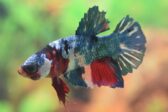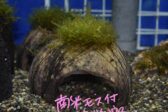Anthuriums brighten indoor gardens with their colorful spathes and lush leaves. They are known for their beauty. It's key to give them the right care to thrive indoors. This guide will show you how. We will talk about creating the perfect environment and proper watering. We'll also discuss feeding routines. Lastly, we'll cover how to prevent and treat common diseases and pests. This will help keep your anthuriums healthy. Follow these essential care steps. Soon, you'll enjoy the beautiful growth of these amazing plants. Anthuriums are part of the Araceae family. They come from Central and South America's rainforests. They are tropical plants loved for their beautiful look and easy care. That's why they're a favorite in homes and gardens. The Anthurium andraeanum is a popular Anthurium variety. It's known for its bright red flowers and shiny green leaves. When people think of flowering plants, they often picture this species. The Anthurium clarinervium is famous for its amazing leaves. Its leaves have bold, white veins that bring elegance to any collection. Anthuriums have a diverse plant background. They naturally grow on trees in the rainforest, loving the moist air and shaded light. This is a big reason why tropical plants like anthuriums are adored worldwide. Each Anthurium variety needs special care. Knowing what they need helps them thrive, showing off their flowers and greenery all year. Whether you like the Anthurium andraeanum’s colorful flowers or the Anthurium clarinervium’s unique leaves, they can add a tropical feel to your space. It's key to make the perfect home for your Anthurium to keep it healthy and bright. These plants need a special kind of setup that's like where they naturally come from. By paying attention to light, warmth, water in the air, the type of soil, and how water drains from the pot, your Anthurium will do well. Anthuriums love light that's bright but not direct. It's similar to the light they get under the trees in the forest. A window that faces north or east is the best spot for them. But, make sure to shield them from direct sunlight to prevent the leaves from getting burnt. Keeping the temperature and humidity right is very important for Anthuriums. They grow best when it's warm, between 65-80°F, and the air is a bit moist, about 60-70% humidity. You can increase humidity around them with a humidifier or by placing them on a tray filled with water and stones. The type of soil and pot you choose affects your Anthurium's health a lot. The best soil lets air through and drains well, and it usually contains peat, pine bark, and perlite. Pots need to let excess water out to stop roots from rotting, so pick one with holes at the bottom. Always check the soil to make sure it's not too soggy. Watering is crucial for a healthy Anthurium. It's vital to know when and how to water them. This ensures they stay healthy and grow well. Following a Anthurium watering schedule is essential. Water them when the top inch of soil feels dry. Checking the soil regularly lets you water them just right. The right houseplant watering techniques help your Anthurium flourish. Use water that's lukewarm and filtered to keep the plant happy. Make sure the water doesn't touch the leaves to avoid diseases. Pour it around the soil and let the extra water drain. This stops root rot. Watch out for signs of overwatering symptoms and underwatering symptoms. This way, you can fix problems fast. Yellow leaves and mold on the soil mean too much water. Droopy, dry leaves mean not enough. Change how you water as soon as you see these signs. Keeping your Anthurium healthy and vibrant takes more than just the right setting. It also needs a good feeding plan. Knowing how to care for your Anthurium is key to its growth. Feed Anthuriums with balanced, water-soluble fertilizer from spring to early fall. This supplies essential nutrients right to the roots. It encourages full, green leaves and lots of flowers. Try slow-release fertilizers for a steady feeding method. They slowly give nutrients over time. This means you don't have to fertilize as often. Your Anthurium stays healthy and grows well with this method. Pick a fertilizer that helps leaves and flowers grow. You can choose liquid or slow-release types. Just make sure to follow what the label says to avoid giving too much. This care will help your Anthurium thrive and stay looking great all year. To make your anthurium look good and stay healthy, you need to prune it well and keep up with its care. Doing these things helps your plant bloom and grow strong. For anthuriums, pruning is important. It helps get rid of leaves that are dying or turning yellow. These can make the plant look bad and weak. It's best to do this in spring or summer. You should use clean shears to cut close to the stem. Be careful not to hurt the healthy parts of the plant. This will keep your anthurium neat and encourage it to grow new leaves. Cleaning your anthurium's leaves regularly is a must. Dust and dirt on the leaves can block sunlight, which plants need to make food. Use a wet cloth to gently clean the leaves every few weeks. This keeps them shiny https://rooomly.pl. While cleaning, look for any signs of bugs or sickness. This is a good way to catch problems early and keep your plant healthy. Anthuriums are known for their beautiful leaves and flowers but can face problems. They can get anthurium diseases and houseplant pests. This part talks about how to spot these issues and what to do. You'll learn how to take care of your plants to keep them healthy. It's important to find anthurium diseases early for the best chance to fix them. Root rot is common from too much water, and blight looks like dark spots on the plant. Checking your anthurium often helps you spot these problems early. Houseplant pests such as aphids, spider mites, and mealybugs can attack anthuriums. Aphids and mealybugs stick to new parts of the plant and suck its sap. This hurts the plant. Spider mites are small but leave webs. To deal with pests, use products like insecticidal soap or neem oil. Also, remove parts of the plant that are badly affected. Using preventive plant care steps can help avoid problems with pests and disease. Keep things clean, including tools and pots, and don't water too much to stop root rot. Good air flow and watching for early trouble signs keep anthuriums in good shape. A well-kept anthurium can fight off pests and diseases well. Expanding your Anthurium collection is rewarding when done right. There are a few good ways to propagate Anthurium. The main methods are division, cuttings, and seeds. If you want to try division for Anthurium breeding, first take the plant out of its pot. Then, carefully separate the offsets from the main plant. Make sure each piece has good roots. This is great for grown plants and is very straightforward. Propagation from cuttings takes a bit more care. Pick a healthy stem with at least two nodes. Cut the stem below a node with clean scissors, and then place the cutting in a well-draining mixture. Keeping high humidity and indirect light is key to help it root. Growing Anthurium from seeds is an exciting choice for a longer project. Plant fresh seeds in a moist and sterile base. Keep it warm and moist to help the seeds sprout. This way, you might even grow unique Anthurium breeding hybrids. No matter your method, these techniques will help grow healthy Anthuriums. With these indoor gardening essentials, you can enjoy these lovely plants at home. Roszponka https://homeluna.pl To make your Anthuriums bloom better, you need to pay close attention. Knowing when your plant blooms is crucial. It tells you when to water and feed it. By watering less when it's not blooming, you help it get ready to bloom again. Feeding your Anthurium the right stuff is key. These plants do great with extra phosphorus. Use a fertilizer that's rich in phosphorus to get bright, long-lasting blooms. But be careful to adjust the food according to what stage of growth your plant is in. Getting the light right is very important for your plant's health and its blooms. Your Anthurium should get bright light but not direct sun. Direct sun can damage the leaves and flowers. Not enough light can stop it from blooming. Proper light, along with these tips, will make your Anthurium beautiful.Understanding Anthuriums: Background and Varieties
Choosing the Right Environment for Your Anthurium
Light Requirements
Temperature and Humidity
Soil and Pot Selection
Watering Schedule and Techniques
How Often to Water
Best Watering Practices
Signs of Overwatering and Underwatering
Feeding and Fertilization
Pruning and Maintenance Tips
When and How to Prune
Cleaning and Dusting Leaves
Common Diseases and Pests Affecting Anthurium
Identifying Plant Diseases
Common Pests and How to Manage Them
Preventive Measures for Plant Health
A Guide to Anthurium Propagation
Special Care Tips for Flowering Anthuriums
イシハラはブログが凄い!
熱帯魚、海水魚などの新入荷情報、ワンちゃんのかわいいアップ写真、小動物のおもしろ記事など毎日読んでも飽きない!

2023.02.20
兄妹仲良しマルプー

2022.09.10
山梨県甲府市犬専用トリミングルーム♡ 2022年9月10日

2022.03.02
当店自慢のチンチラさんたち♡

2023.02.16
ベタ入荷しました!!

2023.02.27
海水魚が入荷しています!!

2023.02.27
金魚入荷しました!!

2021.12.09
最近人気な生体などをご紹介!

2023.02.10
入れるだけで完璧!!!

2019.04.24
ついに販売開始!!!

2023.01.06
今年もひよこの予約、はじまります!

2023.02.23
FRP大型水槽取付け!!

2022.12.20
淡水熱帯魚リース紹介

2021.12.19

2023.02.17
肉!肉!